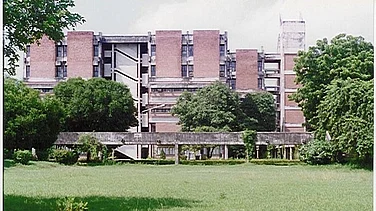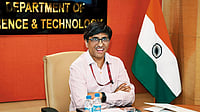India's semiconductor strategy has to cover the full spectrum of innovation, ranging from mid or low- value and high-volume chips to high-value and low-volume, which will help drive the country’s push to bolster the domestic electronics manufacturing ecosystem, Union Minister Ashwini Vaishnaw said on Wednesday.
He emphasised this point after announcing Rakesh Malik, CEO & Founder Director of VerveSemi Microelectronics Pvt. Ltd., as the winner of the BLDC motor controller chip development initiative, selected from 22 participating startups.
“Brushless DC motor—a critical component in electric vehicles, household appliances, and various other small- to mid-sized devices. This represents a mid-value, high-volume chip—a crucial segment in semiconductor development. Our strategy must encompass the full spectrum of chip design, from high-volume, low-cost chips to high-value, low-volume specialized chips,” Vaishnaw added.
Vaishnaw felicitated the winners at the Award Ceremony and Announcements of Indian Web Browser Development Challenge (IWBDC) and Chips to Start Up (C2S) Programme event organized by the Ministry of Electronics and Information Technology.
Under the IWBDC initiative, significant efforts have been made toward developing an indigenous web browser, promoting India's digital self-reliance. Meanwhile, under the C2S program, discussions were held on strategies to support semiconductor and chip designing startups in India.
The Minister announced the winners of the Analog & Digital Design Hackathon. In the analog competition, Team FVT Maniacs from IIT Guwahati secured third place, Analog H from NIT Rourkela claimed second place, and Team Intuition from IIT Delhi emerged as the winner.
In the digital hackathon, Team RISC V from IIT Bombay secured the first place while Team Silicon Scripeter from Saveetha Engineering college and IIT BHU, Varanasi secured second and third position respectively.
“Another significant step in this journey is our focus on RISC-V. We chose to advance in RISC-V because it is an open-source chip design platform, offering flexibility for developing CPUs, GPUs, and other processors. This presents an opportunity to establish sustainable, indigenous products, strengthening our position in the global semiconductor industry,” said the Minister.
Aligning with the Prime Minister;s vision to develop 1 lakh design engineers by the next 5 years, The Chip to Startup (C2S) was initiated by the Ministry of Electronics & Information Technology in December 2021.
The core objective of this initiative is to develop the semiconductor design ecosystem in India by supporting startups, academia, and research institutions in the design and development of chips, IP cores, and systems.
According to the IBEF (Indian Brand Equity Foundation), India’s semiconductor ecosystem is still in the nascent stage and constitutes only 3% of the overall market – the country is at a crucial point to seize the rising demand for chips across fields such as electronics, automotive, telecommunications, and AI. However, India is still importing around 85% of chip requirements by the global market.






























